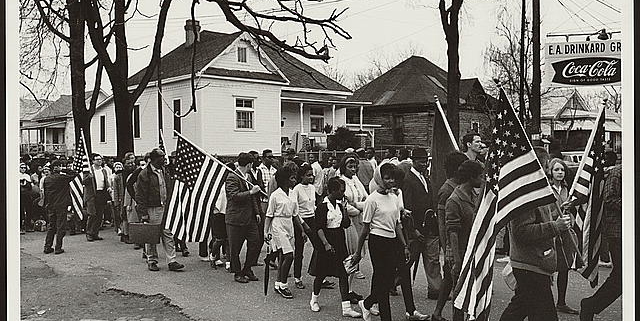14 Days Remaining
Our other countdown posts have tried to productively emphasize how the experiment of democracy in America has coincided with oppression, injustice, and exclusivity. As old as the United States itself is the idea of allowing the vote to some, but not all, people in the country. It is important to note that for a long time, only a very small subset of the population (White, male landowners) were even considered a citizen that could, through their inherent autonomy, participate in the building of government.
While we have discussed the Voting Rights Act of 1965, we have not adequately highlighted the struggle, sacrifice, and passionate dedication it took to have this legislation passed. It would be an incredible oversight to not discuss one of the most formative events that led to national outcry that echoed in the halls of Congress; the infamous “Bloody Sunday” in the 1965 Selma to Montgomery marches of the Civil Rights Movement.
As centuries have passed, entrenched groups have failed time and time again to stifle the movements of many toward a more equal and just society. However, where citizenship was granted, disenfranchisement followed. Those in power used poll taxes and literacy tests as a tool to block the ballot from Black voters. The right to vote for Black Americans had been impeded for far too long. In March of 1965, demonstrators faced gruesome violence at the hands of police as they marched from Selma, Alabama, to Montgomery, Alabama. The non-violent protesters were calling for an end to voter discrimination and suppression of the Black vote.
On March 7th, about 600 people began the march from Selma to Montgomery, led by civil rights activists, Hosea Williams and John Lewis. When the marchers reached the Edmund Pettus Bridge, they were met by state and local law enforcement, armed with billy clubs and tear gas. Alabama Governor George Wallace had ordered state troopers and local law enforcement to “to use whatever measures are necessary to prevent a march.” The troops that blocked part of the bridge put their “means of defense” to use when demonstrators refused to turn around.
The attacks did not cease, and law enforcement deployed tear gas and swung clubs, whips and rubber tubing wrapped in barbed wire to push back the crowd. Still, the protesters marched on. Footage of the assault was captured, and the nation was outraged. Remember, all of this violence and bloodshed was because people were pushing back against Jim Crow’s America. They marched to ensure that the right to vote applied to those suffering in that version of the country.
It is important to remember what those protesters marched 54 miles for, and that their work is our work. People from all backgrounds marched hand-in-hand. People of every race understood that Black votes, and Black lives, matter.





Leave a Reply
Want to join the discussion?Feel free to contribute!